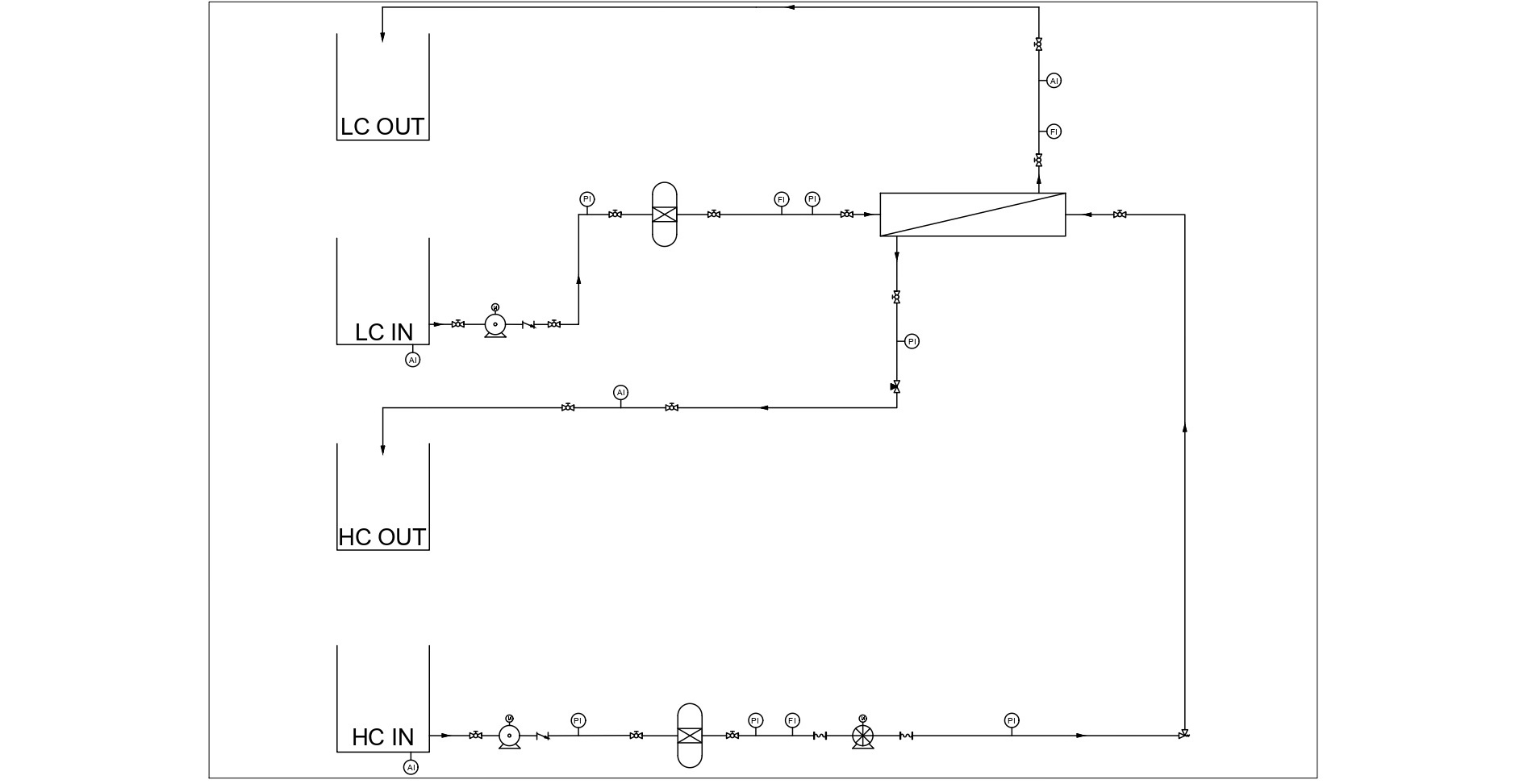
Figure 1
Stream 1-2: Pressurised brine stream (up to 25-30 bar, depending of the stream 3-4 salinity), which gives up a certain freshwater, resulting in a higher concentration brine.
Stream 3-4: Seawater stream (or brackish water) which is diluted by the absorption of freshwater from the stream 1-2.
A more detailed Piping and Instrumentation Diagram can be found hereby:

Figure 2

